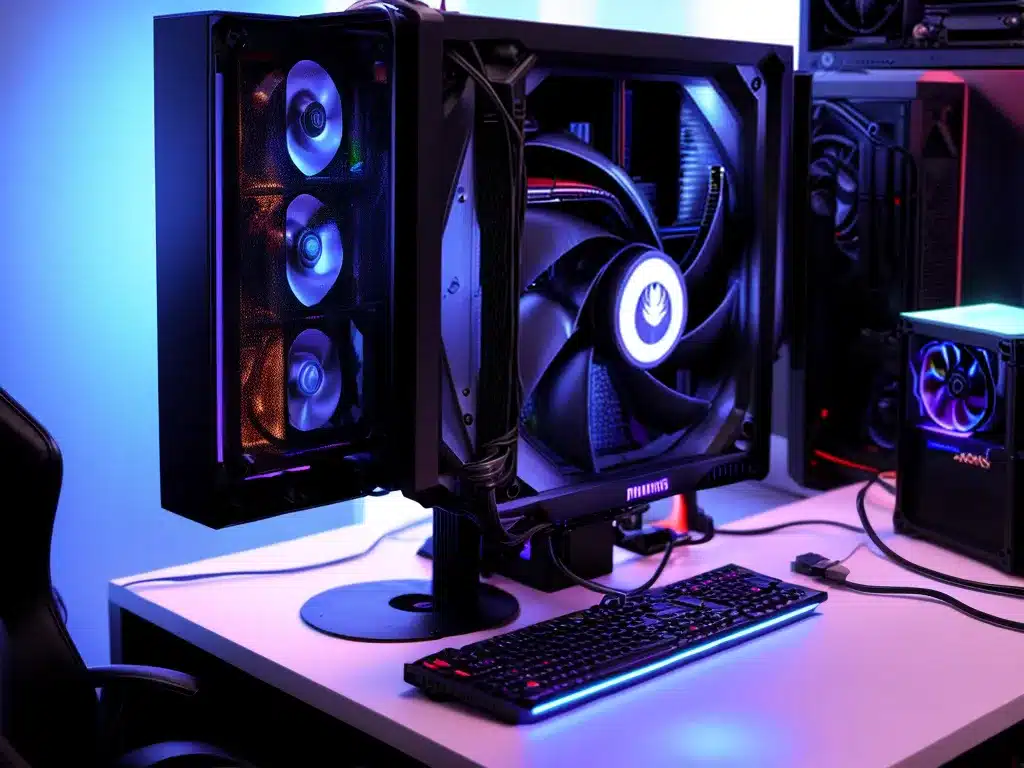
Assess the Damage
The first step after water damage is to assess the extent of the problem. Water can cause damage to many components inside a PC, so you’ll want to open up the case and visually inspect each part.
Look for any obvious signs of water contact like droplets, dried water marks, corrosion, etc. Pay special attention to the motherboard, GPU, RAM, and any drives. Water can short circuit and fry components very quickly, so the faster you can power everything down and dry it out, the better chance you have of saving your hardware.
If there are no immediately visible issues, try turning on your PC and booting into the BIOS. This will help you test core functions and spot any problems. Errors, crashes, or failure to POST can indicate water damage even if it’s not visually apparent.
Dry Out Your Components
Once you’ve assessed the damage, the next critical step is to thoroughly dry all components. Any remaining moisture can continue to cause issues.
-
Unplug all power cables and remove components from the PC case. This gives you better access to dry out each part.
-
Use compressed air to blow out any standing water from crevices and hard to reach spots. Be very gentle if forcibly blowing water, as too much air pressure could damage delicate parts.
-
Let components air dry for 24-48 hours. Place them on a towel or dry surface, avoiding any wet spots. Air circulation will help evaporate any remaining moisture.
-
You can also use a hair dryer on a low, cool setting to speed up drying time. Keep it 6+ inches away and continuously move it to prevent overheating.
The key is being patient and thorough here. Rushing the drying process risks allowing unseen moisture to remain.
Inspect for Damage
Once fully dry, inspect components closely under good lighting. Look for any signs of physical damage or corrosion:
- Discolored or burnt spots on the motherboard
- Corrosion on electrical contacts
- Damage to chip packaging
- Faded or damaged labels on RAM/GPUs
If you have a modular PSU, inspect each cable and connector for corrosion. Any damaged pins or connections can cause power issues.
For drives, listen closely for any abnormal clicking or scratching noises during operation. Use software like CrystalDiskInfo to check drive health and SMART status.
Test Components Individually
It’s a good idea to test components individually before reassembling your whole system. This allows you to isolate any damaged parts one by one:
-
Test the PSU first using a paperclip test to make sure it powers on.
-
If the PSU works, test components like the CPU and GPU individually. If you have onboard graphics, test with just the CPU installed.
-
Try booting with just one RAM stick, then alternating sticks to test each one separately.
-
For drives, connect them to another system externally via SATA or USB. Run scans and check for errors.
Replace any component that’s dead or behaving abnormally. Trying to run faulty hardware can cause additional failures once rebuilt.
Thoroughly Clean and Dry All Components
If components test good individually, do one final thorough cleaning and drying of every part before reassembly. This helps remove any remaining contaminants:
-
Wipe down the motherboard using 90%+ isopropyl alcohol and clean microfiber cloths. Carefully clean any corrosion on pins or electrical contacts.
-
For drives, use distilled water and microfiber to gently clean platters and heads. Ensure no fibers or dust remain.
-
Use compressed air and a small brush to clean out dust, debris and traces of water from smaller crevices and parts.
After cleaning, let components dry for 24 hours to evaporate any cleaning liquids. Proper cleaning and drying prevents issues down the road.
Reassemble and Test System
Once satisfied every component is dry and undamaged, reassemble your system:
-
Apply new thermal paste on the CPU before reattaching the cooler. Old paste may have been contaminated.
-
Do an external test build first by running the system out of the case. This lets you quickly identify any initial problems.
-
If all is stable, install components back in the case and run stress tests on the CPU, GPU, RAM and drives. Monitor temperatures closely.
-
Let the system run for at least 24 hours while continually testing for stability issues. Intermittent crashes or unusual behavior could indicate lingering water damage.
Be patient and don’t jump back into heavy gaming right away. It may take multiple days of testing to fully vet out all components after water exposure. But taking proper steps can successfully recover your system.
Preventative Measures
While accidents happen, you can take preventative measures to avoid water damage in the future:
-
Never place drinks near your PC. Use a separate drink coaster or table.
-
Ensure water cooling loops are professionally installed and regularly maintained. Check for leaks during maintenance.
-
Consider a case with improved water resistance or seals around openings.
-
Move your PC off the floor to reduce risk of flooding damage. Elevate it if possible.
-
Run cables and power cords cleanly to avoid pull accidents. Secure the case to anchor it down.
-
Install a whole house surge protector to help protect from electrical damage in a leak event.
With proper care you can help minimize risks and keep your gaming PC running smooth. Quick action after water damage gives you the best chance of restoring your system and avoiding permanent hardware failure.












